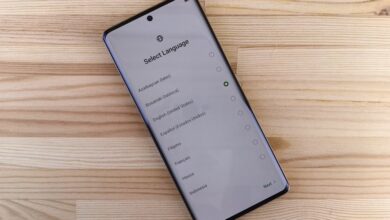Half of UK Adults Now Regularly Use Mobile Payments: A Digital Transformation

Half of UK Adults Now Regularly Use Mobile Payments: A Digital Transformation
Estimated reading time: Approx. 9-10 minutes
- Half of UK adults now regularly use mobile payments, marking a significant and permanent shift towards digital financial tools.
- Mobile payment adoption is accelerating across all age groups, driven by unparalleled convenience, speed, and advanced security features like tokenisation and biometrics.
- Both consumers and businesses reap substantial benefits, including enhanced control over finances, improved operational efficiency, and access to valuable data insights.
- Concerns regarding security and privacy have been robustly addressed through multi-layered encryption, regulatory compliance, and efforts in digital literacy.
- The trend signifies a permanent shift towards frictionless, secure digital financial infrastructure.
- The Accelerating Pace of Digital Adoption Across Generations
- Beyond Convenience: Unpacking the Benefits for Consumers and Businesses
- Addressing Perceptions: Security, Privacy, and Digital Literacy
- Actionable Steps for Navigating the Mobile Payment Landscape
- Conclusion: The Future is Frictionless
- Frequently Asked Questions
The landscape of personal finance in the United Kingdom has undergone a profound evolution. What began as a nascent technological curiosity has matured into a cornerstone of daily commerce, with digital wallets progressively supplanting traditional methods. This shift reflects a nationwide embrace of speed, enhanced security, and unparalleled convenience, fundamentally reshaping how Britons interact with their money.
New data underscores this monumental change: a remarkable half of all UK adults now regularly utilise mobile payments for everything from their morning coffee to essential online purchases. This isn’t just a fleeting trend; it signifies a deeply embedded transformation in consumer behaviour, marking a significant milestone in the country’s digital financial journey.
The Accelerating Pace of Digital Adoption Across Generations
The journey to widespread mobile payment acceptance has been both rapid and comprehensive, driven by a confluence of interconnected factors. Chief among these is undeniable convenience. The ability to complete transactions with a simple tap of a smartphone or smartwatch eliminates the need to fumble for physical cards or cash, streamlining interactions at point-of-sale terminals and enhancing the overall customer experience.
This seamlessness extends significantly into the realm of online commerce. Mobile payment options are now integral to e-commerce platforms, enabling users to complete purchases swiftly and securely, often with a single biometric verification, thus avoiding the repetitive entry of card details. The integration of loyalty programmes and digital receipts within these ecosystems further simplifies and enriches the user experience.
Moreover, the emphasis on robust security measures has been pivotal in building consumer trust. Modern mobile payment systems leverage advanced encryption, tokenisation, and biometric authentication (such as fingerprint or facial recognition) to protect sensitive financial information. These sophisticated security layers frequently offer greater protection than conventional card transactions, instilling confidence in users.
A compelling insight into the breadth of this adoption comes from recent analysis: “Regular mobile payments surged across different age groups last year, new banking data suggests.” This verbatim finding highlights the universal appeal and increasing accessibility of digital payment methods. It demonstrates that the growth isn’t solely driven by younger, digitally native demographics; older generations are also confidently integrating mobile payments into their financial routines, showcasing a broad societal acceptance that transcends age barriers.
The widespread availability of acceptance points has also played a crucial role. From small independent businesses to vast retail chains, the infrastructure supporting contactless and mobile payments is now pervasive across the UK. This ubiquitous presence removes friction for consumers, solidifying mobile payments as a highly viable and frequently preferred option in almost every transactional scenario.
Beyond Convenience: Unpacking the Benefits for Consumers and Businesses
While the ease of use serves as the initial draw for mobile payments, the deeper advantages for both individuals and enterprises are extensive and transformative. Understanding these benefits illuminates why this trend is not only here to stay but poised for continued expansion.
For Consumers: Enhanced Control and Experience
- Speed and Efficiency: Faster checkout processes significantly reduce waiting times, elevating the overall shopping and service experience.
- Reduced Physical Clutter: The diminished need to carry multiple cards and physical cash simplifies daily life and minimises the risk of loss or theft.
- Integrated Budgeting Tools: Many banking and payment applications offer built-in features for tracking spending, setting financial limits, and categorising transactions, empowering users with superior financial oversight.
- Seamless Loyalty Integration: Effortlessly linking loyalty cards to mobile payment apps ensures users consistently earn rewards without extra effort.
- Superior Security: Advanced tokenisation and biometric verification make transactions exceptionally secure, often surpassing the protection offered by traditional card methods.
For Businesses: Operational Advantages and Customer Satisfaction
- Increased Transaction Throughput: Quicker transactions lead to shorter queues, enabling businesses to serve more customers and potentially increase sales volume.
- Lower Cash Handling Expenses: Reduced reliance on physical cash decreases the costs associated with counting, securing, and transporting currency, lowering operational risks.
- Improved Customer Experience: Offering cutting-edge payment options aligns with modern customer expectations, fostering greater satisfaction and loyalty.
- Access to Valuable Data Insights: Digital transaction data provides critical intelligence for informing inventory management, refining marketing strategies, and understanding customer purchasing patterns.
- Attracting a Broader Customer Base: Businesses that embrace advanced payment technologies appeal to tech-savvy consumers and those who prioritise convenience, potentially expanding their market reach.
Addressing Perceptions: Security, Privacy, and Digital Literacy
Despite the rapid surge in adoption, the expansion of mobile payments has also necessitated a proactive approach to common concerns, particularly regarding security, data privacy, and digital literacy. Cultivating and maintaining trust is fundamental for any financial innovation to achieve enduring mainstream success.
Initial hesitations often revolved around fears of losing a device and the potential compromise of financial data. However, the industry has responded with robust solutions. Contemporary mobile payment systems are architected with multiple layers of encryption, making unauthorised access exceptionally difficult. Tokenisation, where actual card numbers are substituted with unique, encrypted codes for each transaction, provides an essential additional layer of protection. Furthermore, features such as remote wipe capabilities for lost devices and mandatory biometric authentication mean a misplaced phone does not automatically equate to compromised funds.
Privacy constitutes another critical area of focus. Consumers rightly demand assurance that their spending habits are not being unduly monitored or exploited. Reputable mobile payment providers adhere to stringent data protection regulations, ensuring that personal and financial data is managed with the utmost care, transparency, and compliance. Continuous user education on data handling and security protocols is an ongoing effort that reinforces confidence and transparency.
Finally, the challenge of digital literacy, particularly among older demographics, has been systematically addressed and largely overcome. Simplified user interfaces, clear instructional guidance, and widespread societal adoption have rendered mobile payments far less intimidating. The fact that “Regular mobile payments surged across different age groups last year,” as confirmed by banking data, serves as powerful evidence of success in bridging this digital divide, demonstrating that these systems are becoming increasingly intuitive and accessible for a broad spectrum of users.
Actionable Steps for Navigating the Mobile Payment Landscape
Whether you’re an individual consumer, a business proprietor, or an innovator within the FinTech sector, understanding and adapting to this evolving mobile payment revolution is paramount. Here are three practical steps to consider:
1. For Consumers: Master Your Mobile Wallet
Proactively set up and secure your mobile payment accounts. Always enable biometric authentication (fingerprint, face ID) to maximise security. Regularly review your transaction history via your banking app to quickly identify any unusual or unauthorised activity. Explore the integrated features, such as spending insights and budgeting tools, often provided by mobile wallets and banking applications to enhance your financial control.
2. For Businesses: Optimise for Digital Transactions
Ensure your Point-of-Sale (POS) systems are fully capable of processing all prevalent mobile payment methods, including NFC contactless and relevant QR code solutions. Invest in comprehensive training for your staff on the efficient operation of these systems to guarantee seamless customer service. Clearly promote your acceptance of mobile payments through visible signage and online platforms. Embracing these technologies can significantly boost customer satisfaction and operational efficiency.
3. For Developers & Innovators: Prioritise Security and User Experience
As the mobile payment ecosystem continues to advance, the core focus for developers must remain on implementing robust security protocols alongside an intuitive user experience. Continuously innovate with cutting-edge encryption, tokenisation techniques, and advanced fraud detection systems. Simultaneously, strive to simplify user interfaces and streamline processes, ensuring new functionalities are accessible and straightforward to adopt for a wide user base, thereby strengthening trust and expanding market penetration.
Real-World Example: The Urban Coffee Hub
“The Daily Grind,” a bustling independent coffee shop located in central Manchester, frequently experienced long queues during peak hours. To address this, the owner strategically invested in new POS terminals that fully integrated modern mobile contactless payment options. Within just a few months, the shop reported a 30% reduction in average transaction time, directly leading to a noticeable shortening of queue lengths and a significant increase in daily customer throughput. Customers expressed greater satisfaction with the speed and convenience, and staff found it considerably easier to manage busy periods. This case vividly illustrates how adopting mobile payment technology can translate directly into measurable business benefits and heightened customer loyalty.
Conclusion: The Future is Frictionless
The trajectory of mobile payments in the UK has evolved beyond a mere convenience to become an indispensable component of daily financial life. With half of all adults now routinely engaging with these methods, it is unequivocally clear that the blend of convenience, security, and efficiency offered by digital wallets resonates deeply with the contemporary consumer. The remarkable surge in adoption across diverse age groups solidifies a broad societal acceptance, firmly establishing mobile payments as a critical pillar of the UK’s financial infrastructure.
As technological innovation continues its relentless march, we can confidently anticipate even more sophisticated and seamlessly integrated mobile payment solutions. From advanced biometric authentication methods to streamlined cross-border transactions, the future promises an increasingly frictionless and secure way to manage our finances. The digital transformation of payments is not merely a passing phase; it is the definitive new standard, perpetually adapting to meet the dynamic demands of an interconnected world.
Ready to Experience the Future of Payments? Explore Secure Digital Wallet Options Today!
Frequently Asked Questions
Q1: What percentage of UK adults regularly use mobile payments?
A1: New data indicates that a significant half of all UK adults now regularly utilise mobile payments for their daily transactions, showcasing a major digital transformation in financial habits.
Q2: What are the main benefits of mobile payments for consumers?
A2: Consumers benefit from increased speed and efficiency at checkout, reduced physical clutter (less need for cards/cash), integrated budgeting tools, seamless loyalty program integration, and superior security features like tokenisation and biometrics.
Q3: How do mobile payment systems address security concerns?
A3: Mobile payment systems employ multiple layers of security, including advanced encryption, tokenisation (replacing card numbers with unique codes), and biometric authentication (fingerprint/facial recognition). Features like remote device wiping also protect against lost phones.
Q4: Is the growth in mobile payments primarily driven by younger generations?
A4: While younger generations were early adopters, recent banking data suggests that “Regular mobile payments surged across different age groups last year.” This indicates a broad societal acceptance, with older demographics also confidently integrating these methods into their routines.
Q5: What advantages do businesses gain by accepting mobile payments?
A5: Businesses benefit from increased transaction throughput (shorter queues), lower cash handling costs, improved customer experience and loyalty, access to valuable data insights for strategy, and the ability to attract a broader, tech-savvy customer base.





